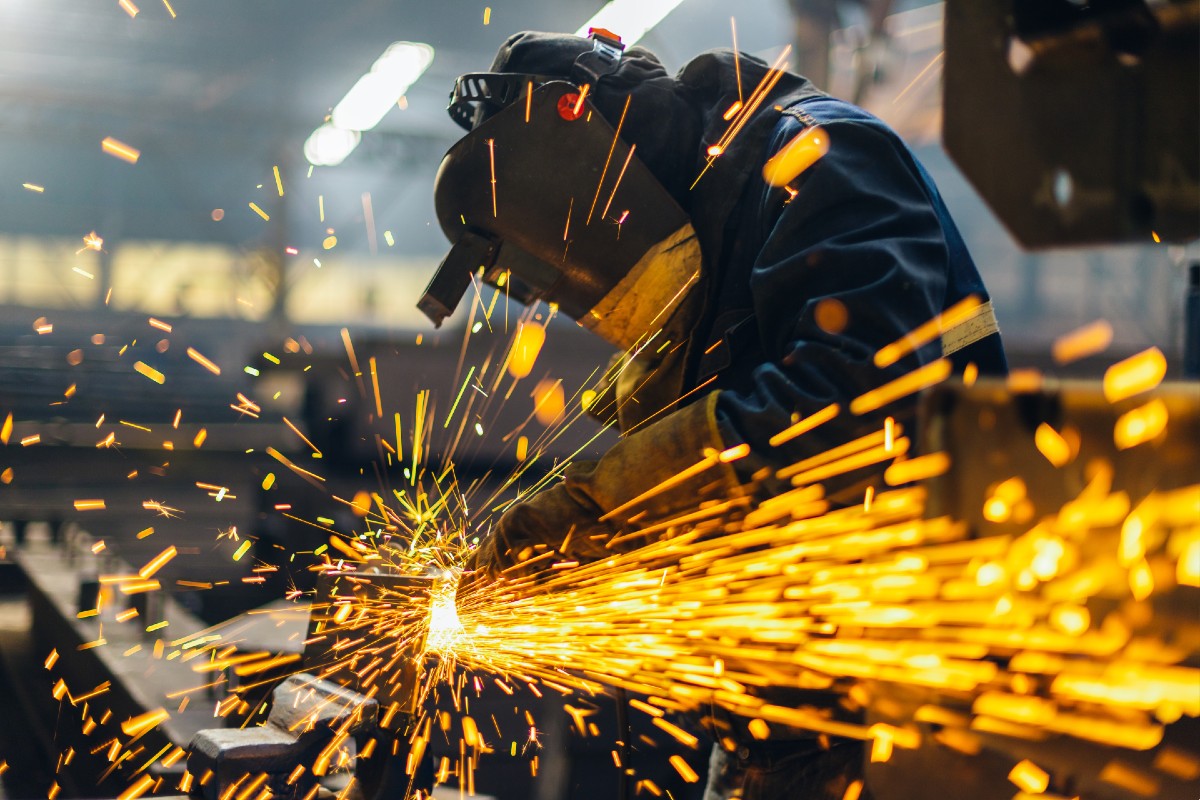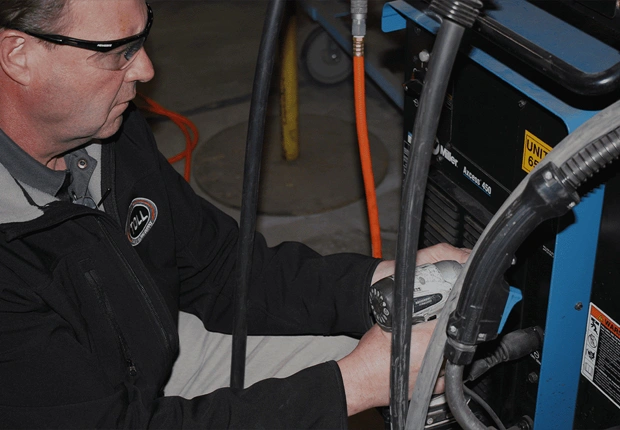Most common welding issues and their fixes by Montana Mobile Welding and Repair Belgrade Fabrication
Common Welding Repair Service Issues and How to Address Them Efficiently
Welding fixings frequently experience a variety of problems that can threaten the stability of the end product. Common issues include poor infiltration, porosity, and imbalance, among others. Each problem provides unique obstacles that require particular strategies for resolution. Recognizing these issues is necessary for welders intending to boost their end results and abilities. This discussion will explore these typical welding repair work concerns and efficient techniques to address them.
Insufficient Infiltration
Poor penetration takes place when the weld steel fails to totally fuse with the base product, leading to weak joints and potential architectural failures. This concern typically stems from inadequate heat input, wrong electrode angle, or incorrect welding speed. Welders may encounter poor infiltration as a result of a miscalculation of the needed parameters for a details product density or kind. Furthermore, contamination on the base product's surface can prevent efficient bonding, aggravating the trouble. To attend to poor penetration, welders ought to ensure ideal setups on their tools and maintain a tidy job surface area. Routine examination of welds is recommended to recognize any type of deficiencies early, permitting prompt corrections and the prevention of endangered architectural honesty in welded assemblies.
Porosity
Porosity is an usual problem in bonded joints that manifests as little gas bubbles entraped within the weld metal. This issue can compromise the honesty of the weld, causing lowered strength and potential failure under anxiety. Welding. Porosity typically develops from contamination, wetness, or inappropriate welding strategies, which permit gases to escape right into the molten weld pool. To resolve porosity, welders need to assure appropriate surface prep work, maintain a clean workplace, and make use of suitable welding parameters. Additionally, choosing the appropriate filler material and shielding gas can reduce gas entrapment. Regular examination and screening of welds can help identify porosity early, ensuring prompt rehabilitative actions are taken, therefore preserving the quality and integrity of the welded framework
Misalignment
Imbalance in welding can develop from numerous factors, consisting of inappropriate arrangement and thermal growth. Recognizing the origin is vital for effective resolution. Numerous improvement methods are offered to straighten elements and ensure architectural stability.
Sources of Misalignment
Welding imbalance often originates from a selection of underlying issues that can endanger architectural stability. One key reason is incorrect fit-up of elements prior to welding, which can bring about gaps and irregular surface areas. Variants in thermal growth throughout the welding process can also result in distortion, especially if the products being signed up with have different coefficients of growth. In addition, insufficient securing and fixturing might fall short to hold parts safely in position, leading to activity during welding. Badly kept devices, including welding machines and devices, might introduce incongruities in the weld grain, additional adding to misalignment. Lastly, operator mistake, coming from inadequate training or experience, can likewise play a considerable function in creating misaligned welds.
Improvement Methods Available
Addressing imbalance successfully requires a combination of restorative techniques customized to the particular issues available. One usual approach is using components or jigs to hold parts in the proper setting throughout welding, making certain consistent placement. Additionally, preheating the products can help decrease distortion and improve fit-up. For considerable misalignment, mechanical adjustment strategies, such as utilizing hydraulic jacks or clamps, can be utilized to fix the setting prior to welding. Post-weld warmth therapy might also be essential to alleviate stress and anxieties created by imbalance. Mindful assessment and change during the configuration phase can prevent misalignment concerns from becoming significant issues, promoting a smoother welding process and boosting overall architectural stability.
Distortion
Distortion is an usual obstacle in welding that can occur from different elements, including uneven cooling and heating. Recognizing the reasons of distortion is necessary for executing efficient prevention methods. Addressing this concern not only boosts architectural stability however additionally improves the total high quality of the weld.
Sources of Distortion
When subjected to the extreme warm of welding, materials typically undergo adjustments that can result in distortion. This phenomenon mainly develops from thermal expansion and contraction throughout the welding procedure. As the weld area heats up, the material increases; upon cooling, it gets, which can create interior tensions. In enhancement, unequal home heating throughout a work surface can worsen these stress and anxieties, causing bending or bending. The sort of material likewise plays a substantial function; steels with varying thermal conductivity and coefficients of expansion might react differently, resulting in uncertain distortions. Furthermore, poor joint design and insufficient fixturing can add to misalignment throughout welding, increasing the possibility of distortion. Comprehending these causes is essential for reliable welding repair service and prevention methods.
Avoidance Techniques
Effective prevention techniques for distortion during welding focus on managing warm input and making sure proper joint layout. Maintaining a consistent warm input aids to decrease thermal growth and tightening, which can bring about distortion. Using strategies such as pre-heating the workpiece can additionally minimize the temperature level gradient, advertising consistent heating. Furthermore, selecting proper joint designs, such as T-joints or lap joints, can boost security and reduce tension focus. Carrying out proper fixturing to safeguard the work surfaces in position even more aids in preserving alignment throughout the welding procedure. Staggered welding sequences can distribute heat more evenly, stopping localized distortion. By using these strategies, welders can considerably reduce the possibility of distortion and improve the total quality of their welds.
Breaking
Cracking is an usual problem experienced in welding repair services, usually resulting from various variables such as improper air conditioning prices, product selection, or insufficient joint prep work. The occurrence of fractures can substantially compromise the integrity of the weld, leading to possible failings during procedure. To address this concern, welders must initially examine the source, guaranteeing that products work and suitably you can check here selected for the details application. Additionally, regulating the cooling rate throughout the welding process is vital; quick cooling can cause tension and cause breaking. Correct joint style and prep work also add to reducing the threat. Implementing these strategies can improve weld top quality and longevity, eventually minimizing the chance of splitting in finished weldments.

Insufficient Combination
A considerable problem in welding repair services is incomplete fusion, which takes place when the weld metal does not properly bond with the base material or previous weld passes - Fabrication. This issue can cause weak points in the joint, possibly jeopardizing the honesty of the welding skills welded framework. Variables adding to incomplete blend include insufficient warm input, inappropriate welding technique, and contamination of the surfaces being signed up with. To resolve this problem properly, welders ought to assure appropriate pre-weld cleansing and surface area preparation, along with adjust their welding criteria to attain appropriate penetration and combination. Routine assessment during the welding procedure can also assist determine insufficient fusion early, enabling prompt rehabilitative measures to boost the general high quality of the weld
Overheating
While welding repairs can enhance structural stability, overheating offers a significant challenge that can bring about material destruction. Excessive warm throughout welding can modify the mechanical residential or commercial properties of metals, resulting in reduced strength, increased brittleness, and warping. This sensation is specifically crucial in high-stress applications where structural reliability is vital. Identifying getting too hot can entail aesthetic assessments for discoloration or distortion, in addition to keeping an eye on temperature during the welding procedure. To mitigate the threats connected with getting too hot, welders must click here for more utilize suitable techniques, such as controlling warm input, changing traveling speed, and using ideal filler materials. Additionally, implementing pre- and post-weld warmth therapies can help restore product homes and improve the general top quality of the repair work, making certain long-lasting efficiency and safety and security.
Regularly Asked Concerns
What Are the Typical Indicators of a Welding Defect?

How Can I Examine My Welds for Quality?
To examine welds for quality, one can utilize aesthetic examinations, ultrasonic testing, and radiographic approaches. Each strategy guarantees architectural honesty, determines defects, and confirms adherence to specified requirements, ultimately enhancing the reliability of the bonded joints.
What Safety and security Preventative Measures Should I Take While Welding?
When welding, one ought to prioritize security by putting on ideal individual protective equipment, guaranteeing correct air flow, safeguarding flammable products away, keeping a tidy workspace, and knowing surroundings to avoid injuries and accidents.
Can I Repair a Weld Without Renovating the Entire Joint?
Fixing a weld without redoing the entire joint is feasible, depending upon the damages (Montana Mobile Welding and Repair Belgrade Fabrication). Techniques such as grinding, including filler product, or using a welding procedure can successfully address specific flaws while maintaining the bordering structure
What Devices Are Crucial for Effective Welding Repair Works?
Important tools for reliable welding fixings consist of a welding device, wire brush, mill, safety equipment, clamps, and filler products. Each tool plays an essential duty in making certain high quality and safety and security throughout the fixing process. Porosity commonly develops from contamination, wetness, or improper welding techniques, which enable gases to escape right into the molten weld pool. Badly conserved equipment, including welding devices and devices, may introduce disparities in the weld bead, additional contributing to imbalance. When subjected to the intense warmth of welding, materials often undergo modifications that can lead to distortion. Breaking is an usual concern come across in welding repair work, typically resulting from numerous aspects such as improper air conditioning prices, product selection, or inadequate joint prep work. A substantial issue in welding repair work is insufficient combination, which happens when the weld metal does not effectively bond with the base product or previous weld passes.